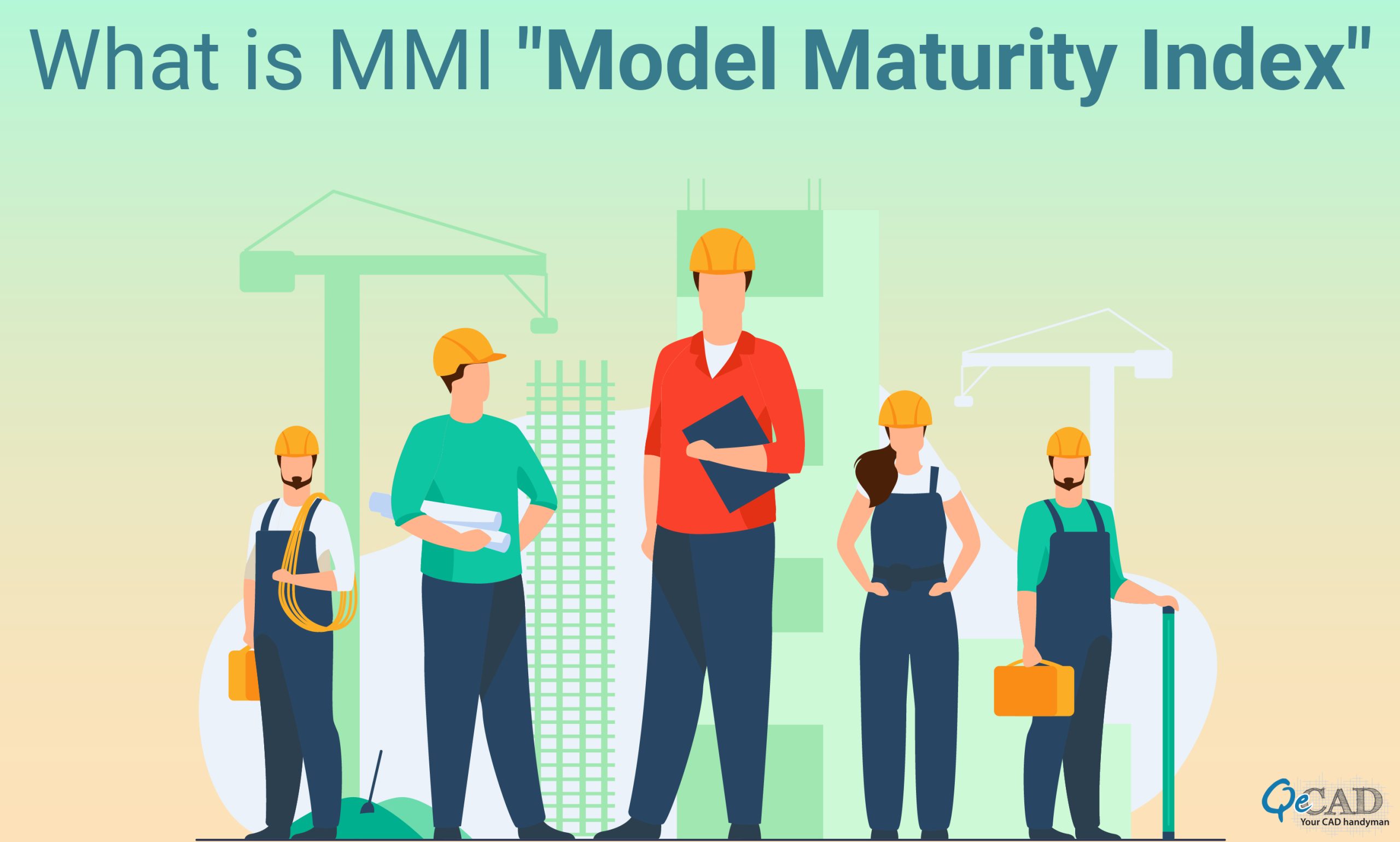
Introduction
The phrase “Model Maturity Index” (MMI) has gained more significance recently, particularly in relation to Building Information Modelling (BIM). A BIM model’s quality as well as wholeness can be evaluated using MMI at several points in a project’s lifespan. We will examine MMI’s relevance, advantages, and relationship to BIM modeling and coordinating services throughout this blog article.
What is MMI (Model Maturity Index)
A BIM model’s accuracy, as well as thoroughness, are evaluated using the Model Maturity Index (MMI), a tool. It gives an indication of the system’s extent of precision and comprehensiveness at various points in the undertaking’s lifecycle. More favorable results on the MMI scale, which runs from 0 to 5, indicate a more comprehensive and precise simulation.
The Construction Industry Institute (CII) devised the MMI, which has since become commonly utilized in the building sector as a metric for assessing the caliber of BIM models. The MMI framework relies on an arsenal of standards that specify how high the model’s degree of delicacy and comprehensiveness is. These standards cover elements like the standard of specificity, the degree of development, along with the level of integration with other systems.
Advantages of MMI
The MMI has a wide range of advantages. One benefit is that the MMI offers a precise and impartial evaluation of a BIM model’s level of quality. By giving everyone within the construction sector a consistent vocabulary for talking about the model’s level of accuracy and thoroughness, it may strengthen cooperation among different groups of stakeholders.
The MMI also has the advantage of pointing up places where the model ought to be improved. Better decisions could be made as a result, and financial assets are able to be utilized more effectively as a result. For instance, if the MMI shows that the model’s degree of complexity remains inadequate, the stakeholders are able to collaborate to increase the model’s level of specifics, which may end up in improved layout choices and a more precise cost assessment.
How is MMI calculated?
Three crucial considerations—geometry, data, and degree of development (LOD)—are used to determine the MMI. Here is a quick summary of each factor:
- Geometry: This describes the precision and thoroughness of the model’s graphical representation of the construction components.
- Data: This relates to the precision and thoroughness of the non-graphical information related to the model’s structural components.
- Level of Development: The term “Level of Development” (LOD) describes how extensive and in-depth the model pieces are.
The results obtained for every one of the aforementioned groups are averaged to produce the MMI. Each element is given a maturity rating between 0 and 3, with 3 being the maximum level of maturity. then comes the MMI final score which tends to be calculated on a scale of scores ranging from 0 to 5.
Modelling and coordination services for MMI and BIM:
The MMI as well as BIM modeling and coordinating services are strongly connected. Regarding a BIM model to satisfy the MMI’s requirements, BIM Modelling Services must be necessary. The integration of the BIM model with additional applications, which include planning as well as expense estimation instruments, depends on BIM coordination services.
By supplying precise and comprehensive information concerning the material, structural, and operational attributes of the construction, BIM modelling services may be helpful in enhancing the level of accuracy of the BIM model. By using this data, a more accurate representation that satisfies the MMI’s requirements is able to be produced.
The integration of the BIM model with additional platforms, for example, time management and expenditure estimate tools, can be ensured with the aid of BIM coordination services. The integration of the BIM model with other systems, such as scheduling and cost estimate tools, can be ensured with the aid of BIM Coordination Services. As a result, stakeholders may be able to obtain more precise and the most recent data regarding the construction endeavor, which may result in more efficient utilization of resources along with improved choice-making.
Conclusion
In a nutshell, the Model Maturity Index (MMI) appears a crucial tool for determining how well-rounded and accurate a BIM model has become. It offers a precise and unbiased assessment of the model’s level of correctness and particulars. The discussion also concludes that Building information modelling (BIM) has completely changed how buildings are constructed and built. Construction projects now require the use of BIM modelling and coordination services.
